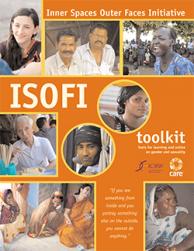Cote d’Ivoire Tests the Health COMpass
 Capacity strengthening is a popular idea right now. But how do you move beyond all that buzz and actually strengthen capacity? HC3 has engaged partners in five countries to identify social and behavior change communication (SBCC) capacity strengthening resources using the Health COMpass and implement those resources at the local level.
Capacity strengthening is a popular idea right now. But how do you move beyond all that buzz and actually strengthen capacity? HC3 has engaged partners in five countries to identify social and behavior change communication (SBCC) capacity strengthening resources using the Health COMpass and implement those resources at the local level.
So, how did we do it? Here’s our team’s experience using the Health COMpass to address SBCC gaps in Cote d’Ivoire. The Cote d’Ivoire JHU·CCP office first conducted an assessment of local NGO capacity. One of the biggest gaps we noticed was in the area of gender. For most local NGOs, the concept of gender was practically unknown. The NGOs did not integrate gender into their SBCC programming, primarily because they did not understand the importance of doing so. These findings guided us as we searched the Health COMpass. We looked for gender training materials that would help us introduce this topic to local NGOs. After reviewing several gender tools, we chose the ISOFI Toolkit because it was a great introductory resource and easy to implement.
We were fortunate to be the first country partner to see and use the Health COMpass. Once we understood the local SBCC needs, the Health COMpass was invaluable in helping us find effective, targeted SBCC resources. The site is very easy to use, well explained, and it downloads easily. The tools are very useful and we were confident in what we found because it is a collection of the most trusted tools across many topics. Using the Health COMpass saved us time as we sought resources to address SBCC needs. We recommend it for anybody doing SBCC; it has something for everybody – from the novice to the expert.
Stay tuned – our next blog will highlight our experience implementing the ISOFI Toolkit and provide recommendations for others interested in using it.







Leave a Reply
Want to join the discussion?Feel free to contribute!